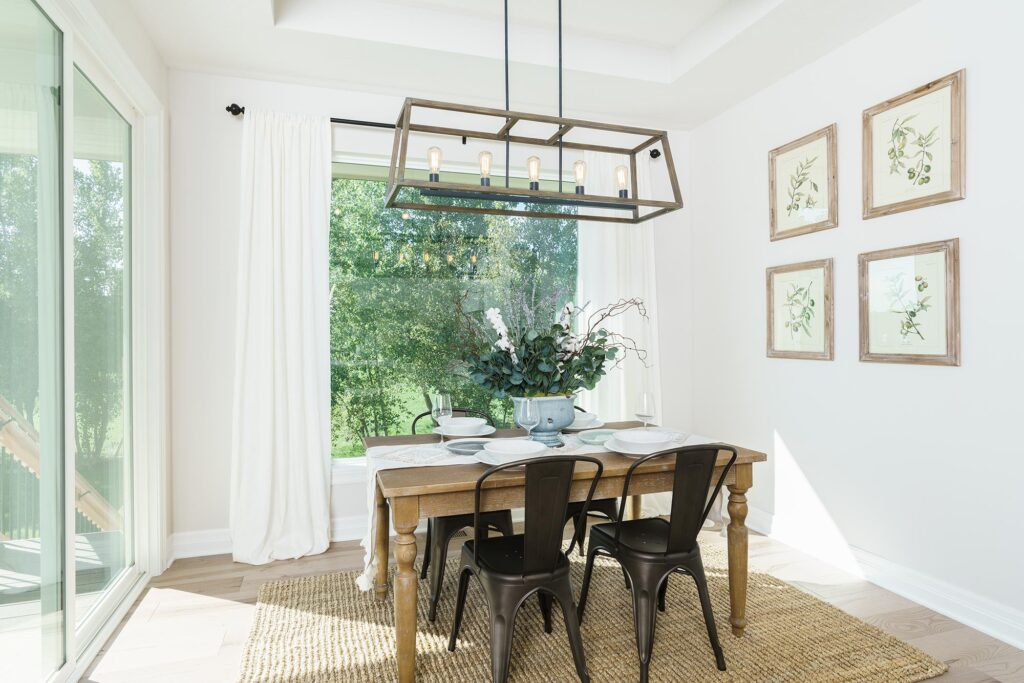Plants are an excellent way to bring both color and health benefits into your home. Did you know that indoor plants improve the air quality in your home, reduce stress, and improve your overall sense of well-being? Adding any indoor plants, big or small, will provide these benefits. To get you started, we’ve outlined different ways for you to easily incorporate plants into your living space!
Herbs
If you’re looking to start small, an herb garden is a great place to begin. Since you will likely be cooking with these herbal ingredients, consider putting your herb garden on your kitchen window sill so it is easily accessible. Once you decide the spot for your herb garden, it’s time to plant! Pick herbs you cook with regularly. The most popular herbs are mint, rosemary, basil, oregano, parsley, and thyme. As you plant your herbs, be sure that you are providing each with adequate space to thrive. It is best to put the herbs in a six-inch wide container that has both draining holes and a waterproof saucer. Afterwards, place the containers in colorful ceramic pots to bring a burst of color to your kitchen garden.
Living Wall
Living walls, also known as vertical gardens, are a unique kind of indoor garden. Rather than being a garden that grows up, these gardens grow out! Living walls are an excellent option for those who do not want a garden that will take up a lot of space. All you need for a vertical garden is a wall! One of the most important things to consider when planning your indoor living wall is light. You want to position your vertical garden in a space that will receive enough light – installing a skylight is an excellent way to provide the correct amount of natural light.
Additionally, it is important to ensure that your living wall has a suitable frame and ample watering system (either a built-in water system or fillable water tanks). Some of the most popular plants for vertical walls include: peace lily, Boston fern, ‘Silver Queen,’ parlor palm, and maidenhair fern. You can always mix and match these plants as well to create a unique living wall specific to your taste.
A Hydroponic System
Hydroponic gardening is a type of indoor gardening that allows you to grow plants without soil. While all plants need water, sunlight, carbon dioxide, and nutrients from soil, hydroponic gardens deliver these nutrients by dissolving them in the water. In other words, hydroponic systems are a mess-free garden that requires minimum space. Most popularly, hydroponic systems are used to grow food because they make it possible to grow nourishing foods in otherwise unprofitable conditions. Hydroponic systems vary in size and set-up. All include a reservoir, nutrient source, and water. Most include a grow light, a material to grow in, and often an air pump. As far as size goes, you can get a hydroponic system small enough for a small herb garden or big enough for a large vegetable garden. You may even choose to set up multiple hydroponic systems throughout your home!
Freestanding Greenhouse
Lastly, if you are looking to bring your green thumb to the next level, consider building a freestanding greenhouse in your backyard. Greenhouses are an excellent way to provide optimal sunlight for your plants while protecting them from bad weather. From pop-up greenhouse tents to greenhouse sheds, there is an option for everyone — no matter your budget.
Once you’ve started your indoor garden, you can look forward to homegrown salads and herbs! Happy gardening!
If you want to learn more about home customization, call Paul Gray Homes at 316-990-0000 and speak to a professional now.
